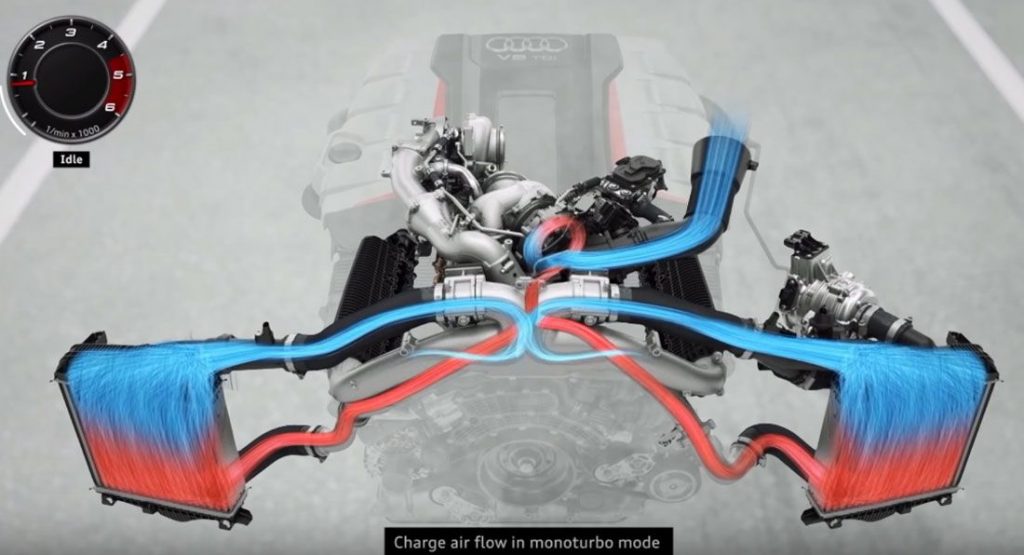In decades gone by, turbochargers created a sudden surge of power a few seconds after the throttle had been depressed.
However, nowadays turbochargers are used to improve fuel efficiency as much as they are to boost performance. They’re also much more advanced than they used to be and have become so trick in some vehicles that turbo lag is now a thing of the past.
One of the first automakers to conquer turbo lag was Audi with the SQ7 TDI.
As Engineering Explained details, the SQ7 TDI has an electric compressor that works alongside the 4.0-liter twin-turbocharged V8 engine. The electric compressor is engaged almost instantly when the accelerator is pressed, offering an immediate surge of power before the turbochargers take over and power the SUV down the road.
The compressor is able to function thanks to the 48-volt electrical system used by the SQ7 and results in virtually seamless acceleration.
Other brands have their own way of eliminating turbo lag. For example, Volvo has designed a small compressor that funnels air from the air filter to a pressurized two-liter air tank. This tank then sends the air into the exhaust manifold to keep the turbocharger spinning even in off-throttle situations.



